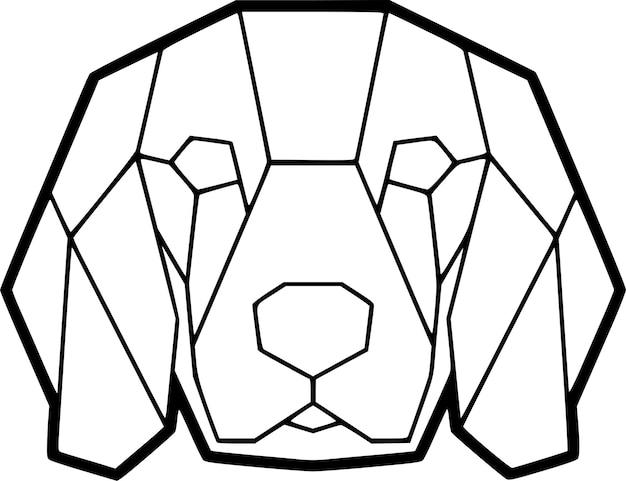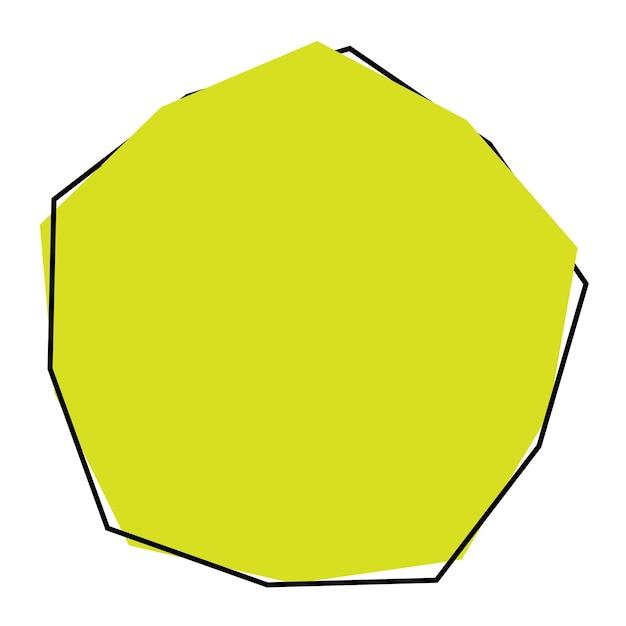Are you curious about the names of different shapes and their corresponding number of sides? If so, you’ve come to the right place! In this blog post, we’ll explore the fascinating world of polygons and delve into their unique characteristics. Specifically, we’ll discover what a shape with 11 sides is called. But that’s not all! We’ll also touch upon other intriguing polygon names, such as 24-sided, 99-sided, and even shapes with over a million sides. So grab a cup of coffee and get ready to dive into the world of polygons with us!
Polygons, or shapes with straight sides, come in various forms and sizes. Each polygon is defined by the number of sides it possesses, and this characteristic often determines its name. While you may be familiar with common polygons like triangles, squares, and pentagons, what about those with an unconventional number of sides? In this blog post, we’ll satisfy your curiosity by uncovering the name of a polygon with 11 sides and shedding light on other intriguing shapes you might not have encountered before.
So, if you’ve ever found yourself wondering about the names of polygons with specific numbers of sides, join us on this exciting journey as we unravel the mysteries of shapes with 11 sides (and more!) and uncover some truly mind-boggling polygon names. By the end of this blog post, you’ll be equipped with a newfound knowledge of polygon nomenclature and ready to impress your friends with your newfound expertise. Let’s get started!

What’s a shape with 11 sides called?
If you’ve ever found yourself counting the number of sides on a shape and wondering what it’s officially called, you’re not alone. It turns out shapes have all sorts of interesting names, including some that seem downright mysterious. So, what exactly is a shape with 11 sides called? Well, grab your geometric compass and get ready for a fun-filled journey into the world of polygons!
Unveiling the Elusive Hendecagon
Drumroll, please! The shape with 11 sides is called a hendecagon. Yep, you heard that right. Hendecagon. Admittedly, it might not be as common as its polygon pals like the triangle or square, but that just adds to its allure. Hendecagon is derived from the Greek words “hendeka” (meaning eleven) and “gonia” (meaning corner). It’s as if the Greeks knew all those years ago that this shape was something special and needed a name to match.
Why Stop at 11
Now, you might be wondering why we stop at 11 sides. After all, can’t we just keep adding sides infinitely? Well, while the theoretical possibilities of polygonal shapes are indeed endless, we often stop at a certain point because some shapes become increasingly difficult to define or work with practically. Plus, who wants to keep remembering names for polygons with hundreds of sides? Hendecagon has a nice ring to it, don’t you think?
Embracing the Quirkiness of the Hendecagon
Sure, triangles and squares might dominate the landscape of shapes we encounter on a regular basis, but that doesn’t mean we should overlook the quirky and unique nature of the hendecagon. Its 11 sides make it fascinatingly irregular, and it has the potential to add a dash of excitement to any geometry lesson or cocktail party conversation (because who doesn’t love discussing polygons over a glass of sparkling water?).
The Magic of Symmetry (or Lack Thereof)
One of the intriguing aspects of the hendecagon is its symmetry, or rather, lack thereof. Unlike some of its more symmetrical polygon cousins, like the equilateral triangle or regular hexagon, the hendecagon doesn’t possess any inherent symmetry. This quirkiness only adds to its charm and makes it all the more captivating. So, the next time you encounter a shape with 11 sides, remind yourself of its unique lack of symmetry and hear the hendecagon whisper, “I’m special.”
A Challenge for the Creatively Inclined
If you’re feeling particularly artistic or enjoy a good math challenge, try drawing a hendecagon freehand. With its uneven sides, it might test your abilities and require some precision. But who knows? Embracing the quirks of the hendecagon could unleash your inner polygon Picasso and inspire a newfound love for mathematical creativity.
In the realm of geometry, the hendecagon stands out as a distinct and intriguing shape with its 11 sides. Although it may not be as well-known as its more commonplace counterparts, it’s the kind of shape that adds an air of mystery and quirkiness to the world of polygons. So, the next time you encounter a shape with 11 sides, embrace its uniqueness, and proudly exclaim, “Ah, behold the mighty hendecagon!”

FAQ: What’s a shape with 11 sides called?
Are you looking to expand your geometric vocabulary? Wondering about a shape with 11 sides, or intrigued by polygons with multiple sides? Look no further! In this FAQ-style guide, we’ll explore the fascinating world of polygon shapes, from the common to the extraordinary. Get ready to dive into the realm of shape names and satisfy your curiosity!
What is a 24-sided shape called
A 24-sided shape is called an icosikaitetragon. It may sound like the name of a fantastical creature, but it’s actually a polygon that consists of 24 sides and 24 angles. With its many sides, the icosikaitetragon is a true gem in the world of geometry.
What is a 99-sided shape
Ah, the mighty 99-sided shape! This spectacular polygon is known as a enneacontanonagon. Try saying that five times fast! With 99 sides and 99 angles, the enneacontanonagon is a marvel to behold. Its intricate structure showcases the limitless possibilities of geometric design.
What is an 11 and 12-sided shape called
When it comes to polygons with 11 and 12 sides, we have two unique names to share. An 11-sided polygon is called an undecagon, while a 12-sided polygon is appropriately named a dodecagon. Both of these polygons exhibit their own distinct characteristics, making them intriguing additions to any geometry lesson.
What is a shape with 1 million sides called
Oh, the grandeur of a shape with 1 million sides! While we don’t encounter polygons of such magnitude in everyday life, we can marvel at their name. A polygon with 1 million sides is simply known as a megagon. Just envision the complexity of a megagon—so many sides, so little time!
What’s a 12-sided shape called
Ah, the good old 12-sided polygon. Its name sounds like something out of a fantasy realm, but it’s actually quite practical. This polygon is called a dodecagon. From board games to architectural design, the dodecagon has found its place in various aspects of our lives, proving that sometimes, twelve sides are better than one!
What is a 17-sided polygon called
A polygon with 17 sides has the unique moniker of a heptadecagon. With its intricate structure and seventeen well-defined angles, the heptadecagon showcases the beauty of polygons beyond the commonly known shapes. Remember, there’s always more to discover!
What is a 999-sided shape called
Prepare to be dazzled by the enchanting enneacontanonactanonagon! Try saying that one out loud, and you’ll feel like you’re casting a spell. With 999 sides and 999 angles, this polygon is as impressive as its name suggests.
How many sides does an undecagon have
An undecagon is a polygon with, you guessed it, 11 sides! No need to count on your fingers; we’ve got you covered. The undecagon may not be as well-known as its simpler counterparts, but it’s a star in its own right.
What is a 16-sided shape
A polygon with 16 sides is called a hexadecagon. But don’t let its name fool you; there’s nothing hex about this fabulous figure! With its 16 well-defined angles, the hexadecagon stands as a testament to the wonders of geometric design.
Is the Megagon a circle
While the megagon may sound like a distant relative of the circle, it is actually a polygon with a staggering number of sides. Unlike a circle, which has infinite sides and a continuous curve, the megagon has a distinct number of sides, usually specified. So, although the megagon and the circle may share a similar sounding name, they are quite different geometric beings!
What is a shape with 100 sides called
Drum roll, please! A polygon with 100 sides is called a hectogon. This mighty polygon may not be as commonly known as shapes with fewer sides, but it’s a fascinating feat of geometry nonetheless. The hectogon marches to the beat of its own drum, proving that there’s always room for more sides in the polygon parade.
What is a shape with 13 sides
A polygon with 13 sides goes by the name of tridecagon. It may not be as familiar as its neighbors, the dodecagon and tetradecagon, but the tridecagon brings its own unique flair to the world of polygons. It’s the perfect combination of complexity and curiosity!
Is there an infinite-sided shape
Ah, the allure of infinity! While the concept of infinity can be mind-boggling, shapes with an infinite number of sides, often called circles, are indeed a mesmerizing notion. With their smooth curves and continuous boundaries, circles serve as a reminder that sometimes, infinite possibilities lie within the simplest of shapes.
What shape has the longest name
When it comes to polygon names, longer isn’t always better, but it sure is intriguing! The distinction for the shape with the longest name goes to the mighty enneacontanonactanonagon, with its whopping 999 sides. This remarkable polygon showcases the creativity and linguistic skills of mathematicians who love to label their geometric wonders.
What is a 20-sided shape called in 3D
In the three-dimensional realm, a 20-sided shape unleashes its true potential as an icosahedron. With its many faces, edges, and vertices, the icosahedron takes on a mesmerizing form. This three-dimensional rendering of a 20-sided shape is a delightful addition to any geometry enthusiast’s collection.
What’s a shape with 14 sides
A polygon with 14 sides is called a tetradecagon. It may not be as common of a topic at dinner parties as shapes with fewer sides, but the tetradecagon carries its own distinct charm. So next time you’re pondering over polygons, don’t forget to invite the tetradecagon to join the conversation!
Now that you’re armed with a plethora of polygon knowledge, go forth and impress your friends with the captivating world of shape names and their marvelous mathematical properties. Remember, whether it’s an undecagon, enneacontanonactanonagon, or even a megagon, there’s always something new and exciting to discover in the realm of geometric wonders. Happy exploring!